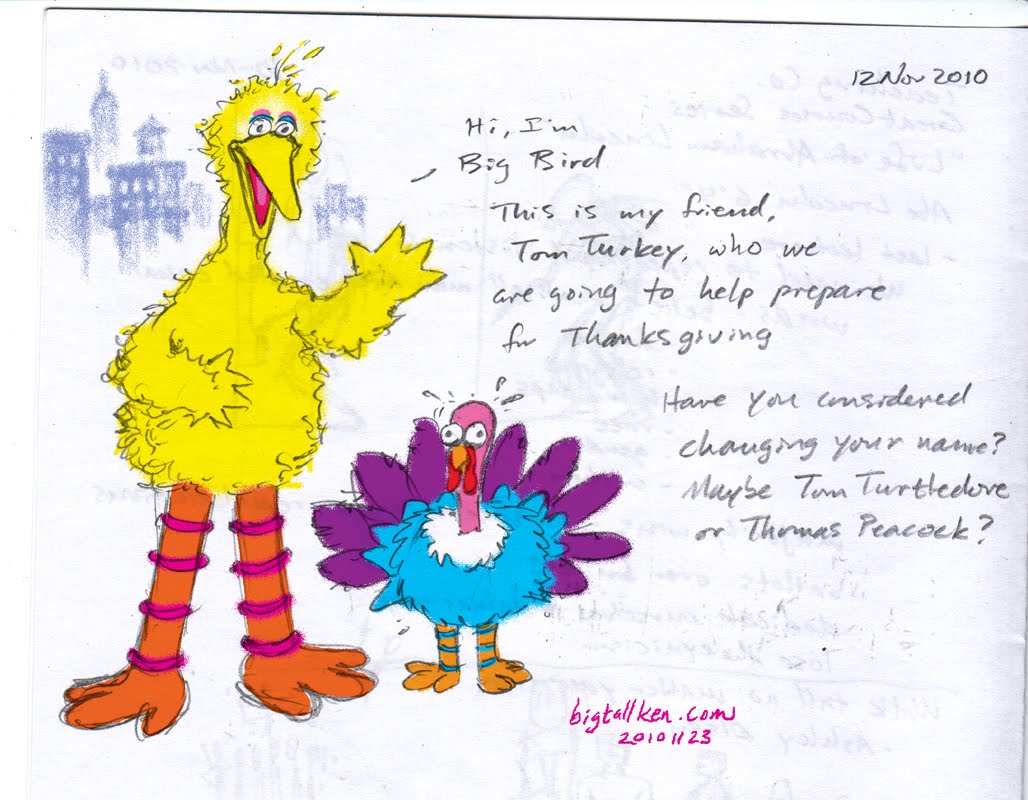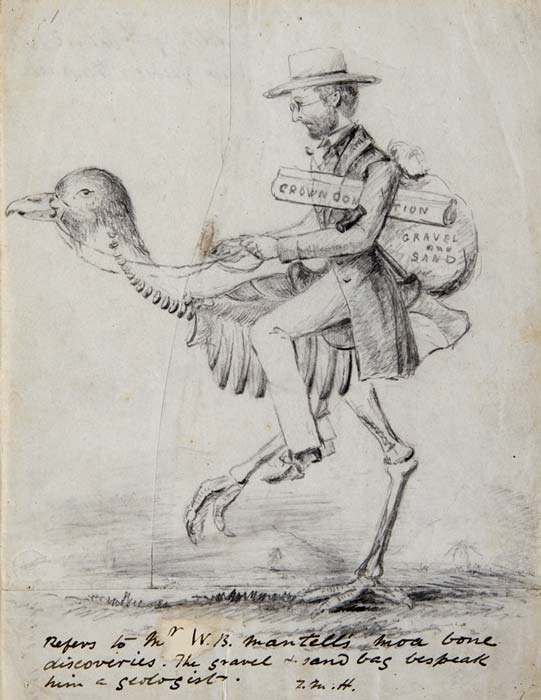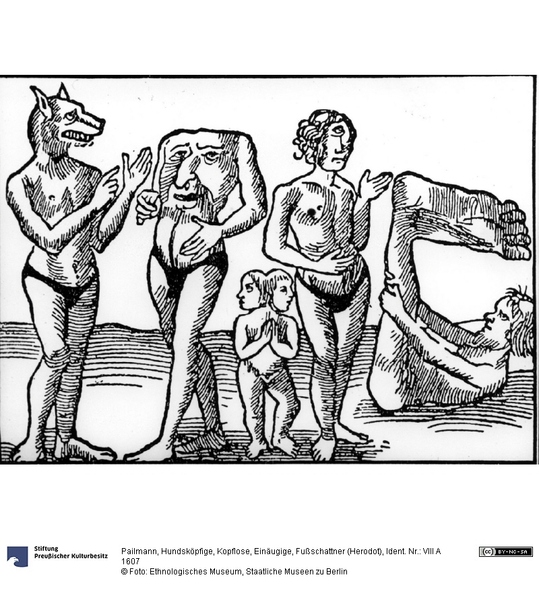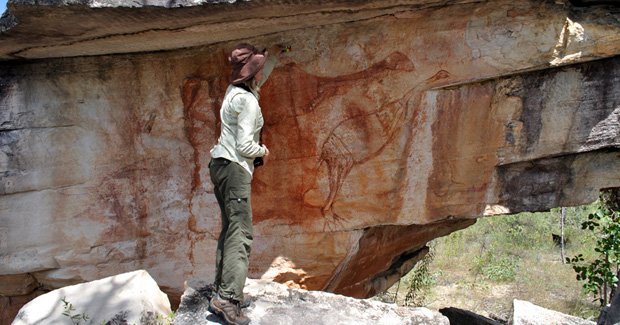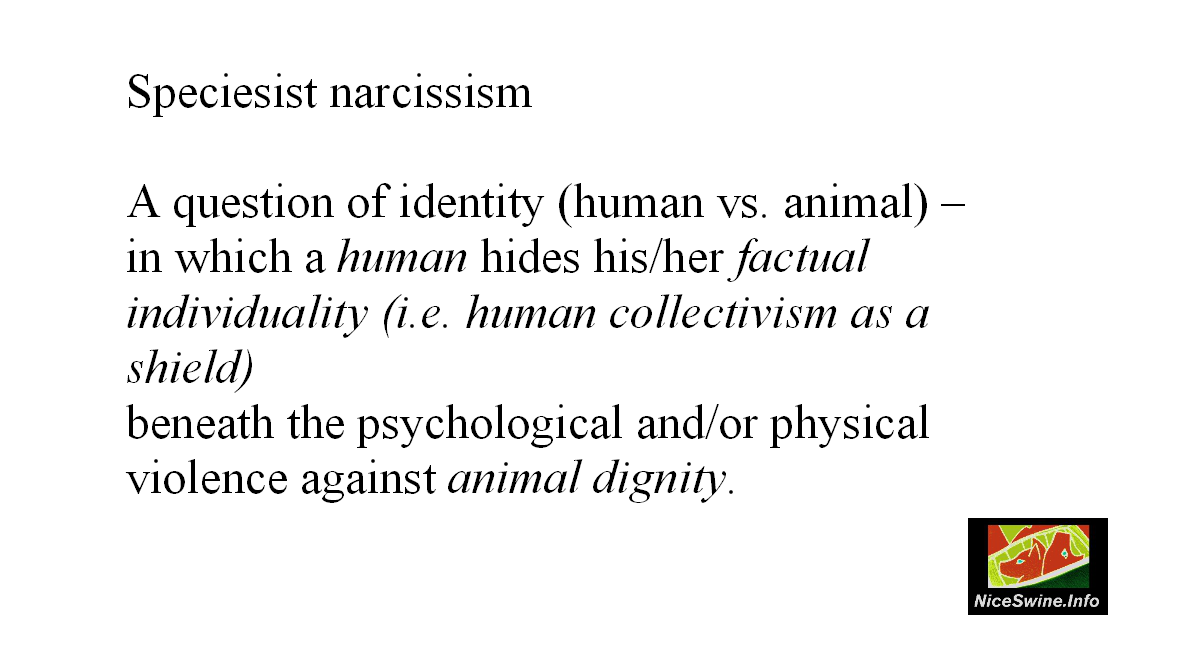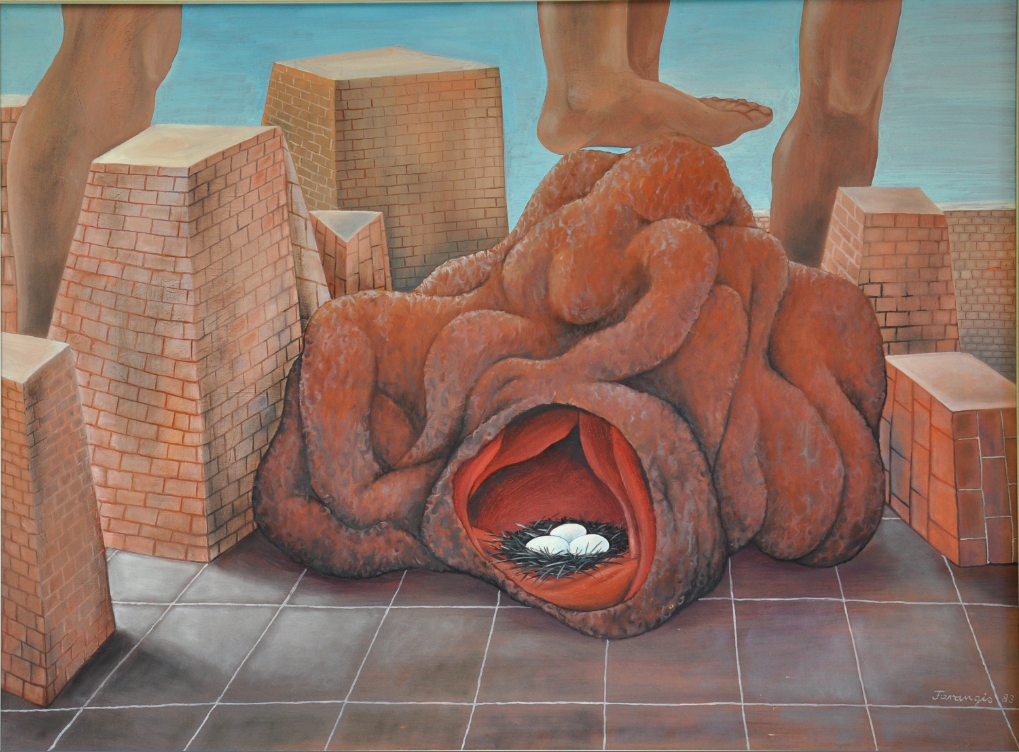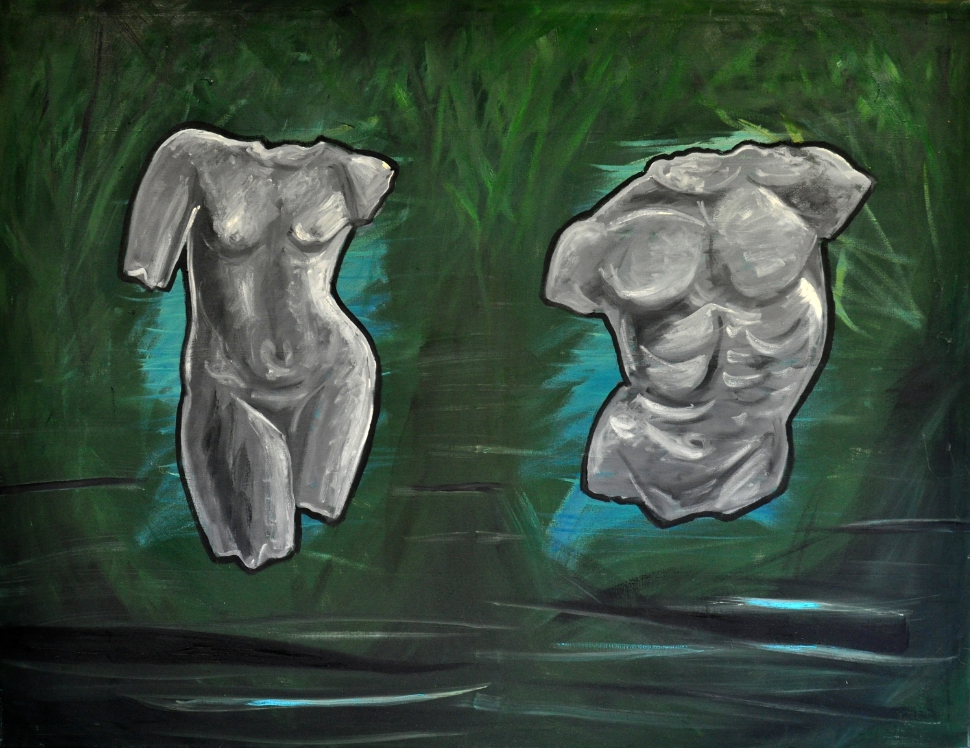
Io – Farangis G Yegane
Animal Thealogy:
Man-Machine? Animal Reason!
Palang LY
This text as a PDF (link opens in a new window)
The basic question about the categorical division into (nonhuman) “animals” and “humans” (Homo sapiens), brings up probably before the question of its moral implications, the question about what exactly hides beneath both these big generalized identities.
Why has the view about that what-animals-are and that what-humans-are finally lead to us only viewing animals under biological terms today?
Is it enough to attribute only an instinctual behaviour to nonhuman animals?
Is it thus the ‘fault’ of animals that humans won’t relate to them in any further way than how they are relating to them today?
What other options are there?
Animal = instinctual? Human = reasoning? Attributed identities in a human-centered narrative
If we don’t accept the view that nonhuman animals are those who have to stand below humans, within a frame given by e.g. a biological, philosophical or even divine hierarchy-of-being, then such a claim doesn’t have to be solely morally motivated. It can also mean that we question the way in which both identities („animal“ and „human“) are understood, that we question the separation and qualifications of these identities, even before the questions of our wrongdoings enter the floor of debate.
We can ask if the interpretation of the characteristics that are considered to make up the marking dividers within a human-animal hierarchy, are in reality a negation of the autonomous value of otherness in nonhuman animals.
We know that the single criterion that serves as our standard, is the human parameter, i.e. the human model counts as the ideal, as the standard, for creating norms.
So what happens if we put this standard of measurement into doubt?
It’s a question of perspective!
Conclusions deduced in the fields of biology and psychology, with those being the main academic sectors that deal with the explicability of animal identity, nail the perspectives:
- on relevant characteristics
- on how animal characteristics (in either, the case of humans or nonhuman animals) have to a.) express themselves and b.) in which exact correlation they have to become „measurable“, in order to reach a certain relevance or meaningfulness from a human point of perspective.
So the problem lies in the question why humans won’t accept nonhuman animal autonomy when it can’t be made fathomable through the perception of a value-defined comparison.
Why are own animal criterions and why is their independent meaningfulness (for the sake of themselves and for their situation within their natural and social inter- and co-specific contexts) rendered irrelevant, when they cross our perspectivical glance, and when these animal criteria could also be understood and accepted to fully lay outside of our hierarchical-framework?
Animal individuality
To be willing to accept an autonomous meaningfulness of nonhuman animals, means to question the deindividualization, that our views and explanations about nonhuman animals purport.
Those are the views that allow us to set nonhuman animals in comparison to us, as ‘the human group’ of identity, instead of seeing otherness in itself as a full value. And those are also the views that seek to sort out how the existential ‘meaning’ of nonhuman animals might relate to anything that matters to us “humans” as a closed group of identity.
The deindividualized view of nonhuman animals almost automatically goes along with the subtraction of value in terms of attributed meaningfulness, and so we land at the moral question now, as the question of identities, individual existence and deinidivdualisation pose some ethical conflicts.
Nonhuman animals, and the attributed identities in the fields of “animal” and “human” social contexts
If we can view nonhuman animals, apart from their localization in the realm of biology, for example also in a sociological context, then we could ask the question: „How do people act towards nonhumans animals?“
Can we explain the behaviour of humans towards nonhuman animals solely by referring to the common notion that one can’t really behave in any particular way towards nonhuman animals because they are supposedly ‘instinctively set’ and ‘communicatively restricted’ compared to us, and that thus our behaviour towards them can’t contain an own quality of a social dynamic?
Can we legitimate our typically human social misbehaviour towards nonhuman animals by referring to the „stupidity“ that we interpret into nonhuman animal behaviour?
(Such questions would of course only feed themselves on stereotypes of animal identity, no matter from where they stem.)
However we probably can’t ask any of such questions a sociologist, though it could fall into their scope to analyse these relationships. Sociologists likely would prefer to deal with the Animal Rights movement and not deal with the interaction between humans and nonhuman animals, since everyone seems to be with the fact that a natural science, biology, has already determined what the identity of nonhuman animals “factually” is. And it must be said that even the Animal Rights movement seems the place moral question somewhere almost out of reach by accepting the explanation of the identity of animals as something more or less strictly biological.
***
A geometrical image
Imagine two abstract groups. Group A consists of triangles and everything that surrounds them becomes mathematically relevant to their own triangular form. This happens as all that either resembles or does not resemble a triangle appears in a certain colour.
Group B are circles.
Now group A says that group B aren’t triangles (because A are triangles) and that B also weren’t squares or rectangles.
Does any reason follow from this that would mathematically legitimate for the circles to be excluded as equally valid geometrical figures?
The triangles are different compared to the circles, but both are geometrical figures and insofar of an equal value.
They can be correlated due to each of their geometrical qualities, even when the circles do not match the characteristics of the triangles!
Let’s take this as our metaphor
Sociology does not question the social interaction between humans and nonhuman animals. They don’t scrutinize that relation from their viewpoint, because the view held on the human relation towards animals is already set in its core by the natural sciences.
The hierarchical empire built by the natural sciences though [and along with it the humanistic knowledge on which the natural sciences base upon] rules every need for any further examination and consideration of this relationship out. We do not see the direct relation between humans and nonhuman animals.
A most typical exemplification of that inability to relate on a basic and fundamental level of ‘common sense’ can be pinpointed in the difference between relating to nonhuman animals in terms of “joy” versus “love”: as in “animals equally feel joy” or “we can both love”, and “pain” versus “violence”: as in: “animals can equally feel pain” or “we can both experience violence”. Love is a intermittent sentiment, violence also basis on social interactivity (though in that negative sense), where as “joy” is located only in the subject we attribute the feeling to, and the same goes for “pain”.
We – nonhuman animals and humans – understand the questions of LOVE and VIOLENCE. Whereby “joy” and “pain” are reductionary names for the “same” thing.
Regarding the question whether animals can be regarded in any way as moral agents, one has to ask, does moral exist outside the human concept of morality?
When we discuss morality we presume that the substance matter which the term comprises came into life through our perceptions, and because we define what „moral“ means, we can claim a described phenomenon as solely ours.
What does morality consist of?
Does morality solely exist because of a theoretical framework? One can doubt that. Morality on the one side has something to do with basic social interaction, through that morality gains value.
On the other side are the superordinate agreements about morality, which are declared and decided upon by an elite or defining group/process, but through that the agreements about morality only contain a forced validity, which is disconnected from its own basis, that is: the meaning of social interaction between beings (i.e. the construct about morality excludes that what lays outside of its hierarchy, other forms of interaction that contain „social values“ ).
On the individual plane exists that what any “I” perceives and experiences in her lived interactions and experiences as „morally okay“. And that can be between nonhuman animals or humans in the whole environmental context – seen from a common sense point of view if we take the human view.
When we discard the human decorum that surrounds and sticks to the word morality, we can say that every action has a moral implication, non-anthropocentrically seen.
It’s always the same: otherness. We have to accept it.
Animals have a very different philosophy-of-living in a neutral comparison to our philosophy of life, and I believe one can use the term philosophy here to describe the yet unnamed phenomenon in nonhumans animals of how they structure and perceive their own lives.
I ask myself whether the human problem with nonhuman animals isn’t rather to be found in the differences of their philosophies-of-life when compared to our typically human ones.
The problems lie much more in this radical otherness from us, than in the reasons of gradual biological differences or in the often assumed moral impotence on this other one’s (the animal’s) behalf.
The problem thus seems to fluctuate around the scope of difference and coinciding similarity. In many aspects we equal nonhumans animals a lot, but in the aspect of our dominance claim finally, we see nonhuman animals as „the losers“, the bottom of the evolutionary or divinely ordained hierarchical order on which we can postulate our violent and hypocritical sense of power.
That nonhuman animals are the losers amongst the biological animals is even an attitude that some of their advocates purport. I often meet people who won’t reckon a unique, self-sufficient quality seen to be in the closeness and distance amongst the different animals (including human animals). In the forefront of every argumentation there is always: how are they in comparison to us. As if humans and nonhuman animals had to compete on an „equal” scale … and another related argumentation goes: how much of their „instinct“ could possibly entitle them to be granted rights; right that would protect them from humans (whereby it is highly questionable whether those who have prejudices against you, can really grant you your own rights.)
Human society, it seems, will always consider the „us“ and the „we“ as objectively more important, insofar as the „we“, the how „we are“, is the criterion, and nonhumans animals are measured against it.
The crucial point is to accept others and to accept the validity of otherness. For the others and maybe even for us!
Reaching far? Animal Thealogy – female animal deities, female human deities, on the terms of such angles.
Painting: Io by intersectional antispeciesist veg*AR artist Farangis G. Yegane – Lebensschutz!
